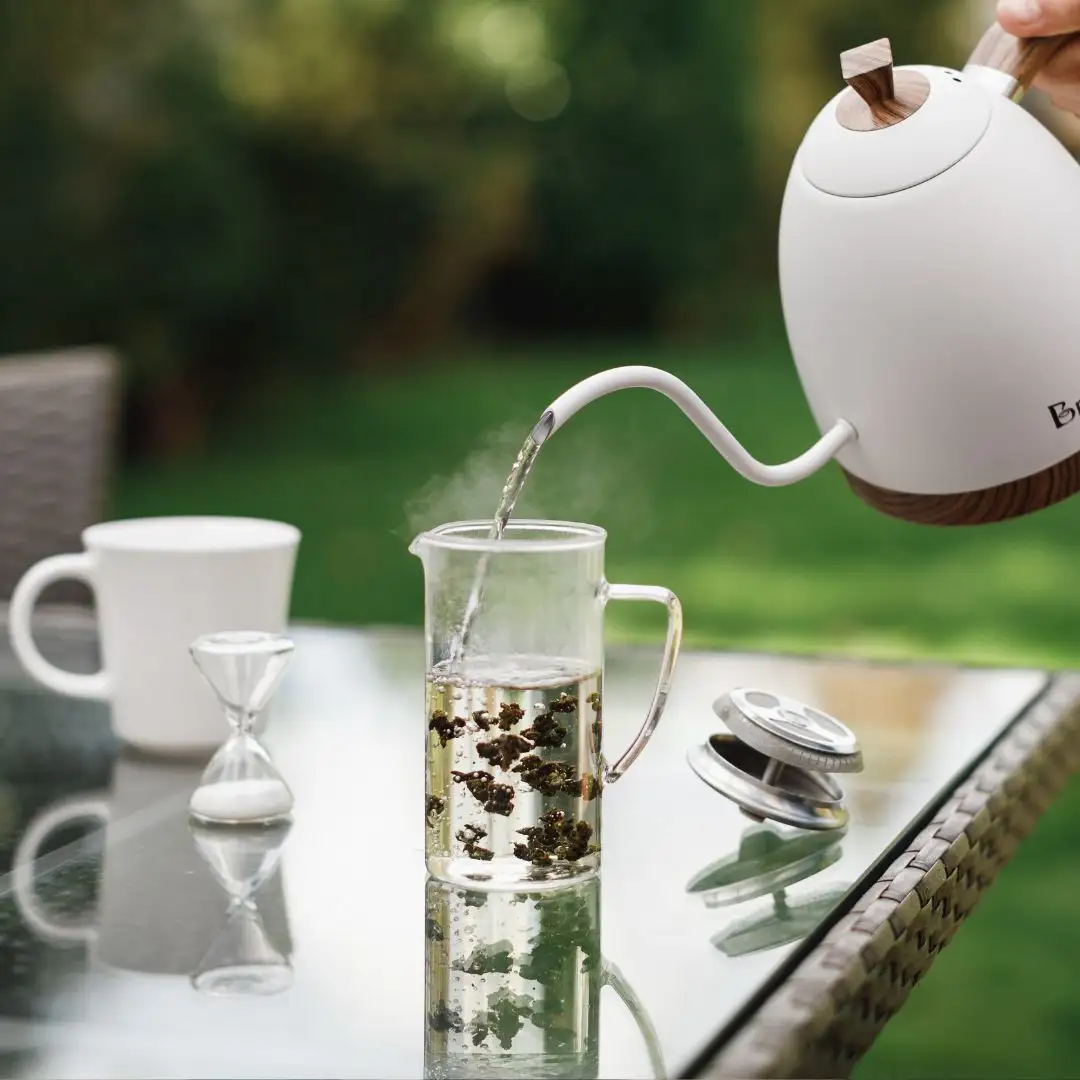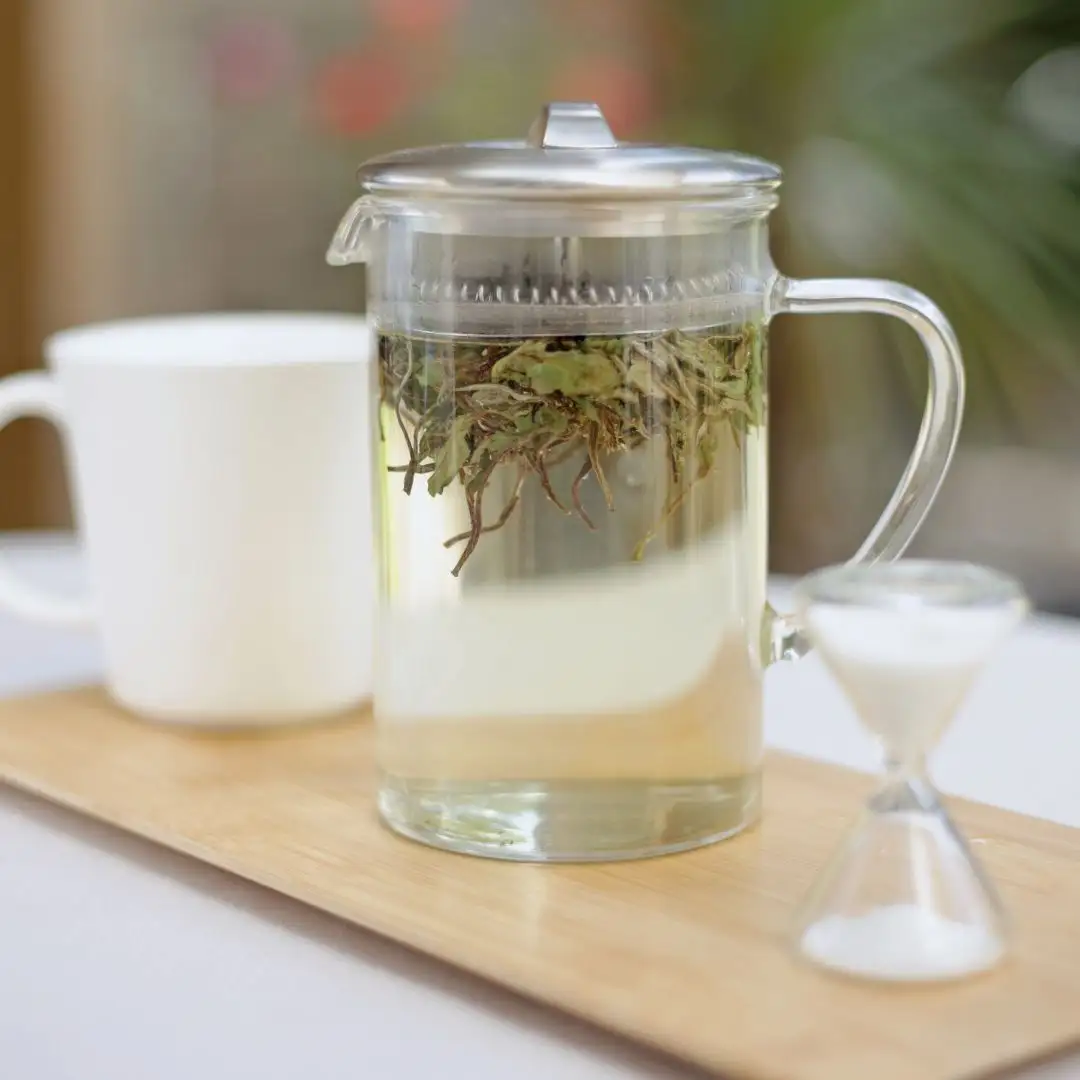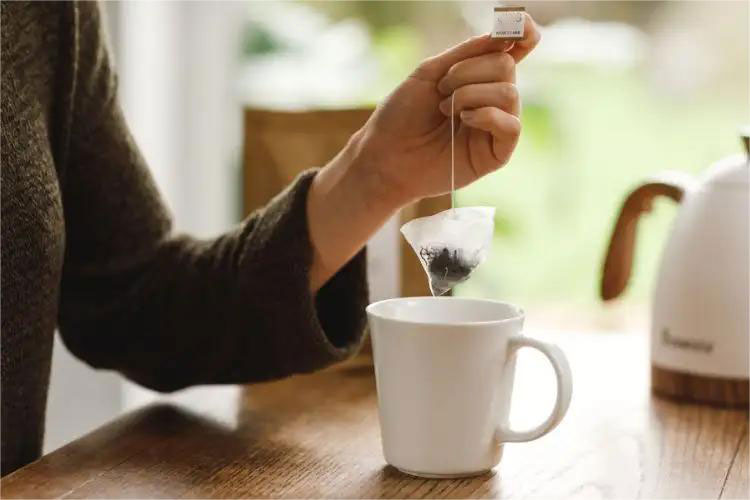To Boil or Not to Boil: Water Temperature for Tea Explained
Why do different temperatures make a difference?
When you add water to tea leaves, the leaves infuse with the water and release their flavour. The leaves also give texture or structure, for example a tea might feel thick and syrupy when you drink it or it might feel drying or astringent.
The art of making a good cup of tea is balancing the flavour and structure. You do this by controlling the temperature of the water and the time that the leaves are left to infuse.
The temperature of the water decides how quickly flavour and structure is released. The higher the temperature, the quicker the release. A cup of tea made with boiling water will look darker, taste stronger and have more structure than a cup of tea made with 80-degree water that has infused for the same amount of time.
In general, using a lower water temperature with a longer infusion is easier – it gives a thicker, smoother body and the aromatic high notes are clearer and remain in the cup for longer. Hotter water makes the high aromatics come out more quickly but they also evaporate more quickly and are easily tainted by the tannins. Using higher temperature water can be good for some teas though, if you control the time.

Pour in your hot water and enjoy watching the leaves unfurl and infuse.
What temperature of water will get you the best flavour tea?
A rule of thumb is the lighter or fresher the flavour you’re looking for, the lower the temperature of the water. The stronger or richer the flavour, the higher the temperature.
Each of the six types of tea: black, green, yellow, white, oolong and puerh, has a different taste, so we can use the tea type to know how light and fresh or rich and intense tea will be, and so know what temperature to try.
You can read here about how the processing of the leaves decides the type and the flavour in much more detail.
Of course, there are big nuances of flavour within each category according to the cultivar of the tea bush that’s used, the place it’s grown, who’s processing it etc – but we can still say fundamentally:
- Green tea will be light, grassy and fresh
- White tea will be delicate and honeyed
- Yellow tea will be light and mellow
- Oolong tea will be complex, floral, fruity & rich
- Black tea will be strong, rich and full-bodied
- Puerh tea will be smooth and earthy
This shows us that green, white and yellow tea with their lighter bodies and fresher flavours will benefit from lower temperature waters; and oolong, black and puerh with their rich bodies and stronger flavours will benefit from higher temperature water.

Adding a splash of cold water to your leaves before topping up with boiling water will ensure a cooler temerature for green and white tea.
Water Temperature for Tea - When is boiling water good?
Boiling water is good for black teas when you want to make them quickly and drink them hot and strong. Black teashave rich character and the heat from the water will bring their richness and strength into your cup.
We recommend using boiling water for almost all whole leaf black teas and especially breakfast style teas, like our Assam Breakfast, with milk. Using high temperatures in your water to get the maximum malt, honey and raisin flavours and a thick, robust structure from an Assam tea will mean that the infusion balances and blends with the sweet, thick milk to give the most satisfying drink.
A top tip from Will, our tea guru, and passionate drinker of Yunnan Gold:
“When making black teas I’ll always heat the pot before I add the leaves. It ensures that maximum heat stays in the water and extracts the flavour and does not instead get leached out by the glass or ceramic of the pot. It’s one of my favourite moments of tea making – when I add my leaves to the hot pot, the heat releases the aromatics from the leaves – try it and you’ll get a great waft of the aroma before you’ve even made your tea, whetting the appetite for what’s to come.”
If you don’t use boiling water, there won’t be enough structure from the leaves to carry the flavours in the tea and so you’ll get a weak and insipid cup of tea.

Boiling water is recommended for a rich and robust breakfast tea with milk.
Water Temperature for Tea - When is boiling water not good?
It’s not good for green,white or yellow tea.
Green and white teas are lighter and more delicate in flavour than black teas. Using a lower temperature of water will mean you'll get less structure – the part of the drink which might feel astringent or even taste bitter. Too much structure means there will not be enough space in the cup for the fresh, green, floral, sweet and grassy flavours – your palate will be covered by astringency. Control this by using a lower temperature of water and leaving lots of room for the delicate flavours to be enjoyed.
Depending on the style, we recommend using between 50-80°C water for green teas. Most Chinese green and white teas, like Silver Needle and Dragon Well (Longjing)work well at 70-80°C; and Japanese green teas, such as Sencha and Gyokuro work well at 50-60°C.
What about Oolong tea?
Oolong has many subcategories linked to the level of oxidation and whether or how much they are baked.
If an oolong looks green-ish, you can assume it’ll be relatively light and so will need less than boiling water. Examples include Ali Shan from Taiwan or Iron Buddha(Tieguanyin) from Fujian, China – they look and taste green-ish but they are more fruity and creamy than green tea. These teas work well made between 85 and 95°C.
More heavily oxidised oolongs will look more similar to black tea and will have a richness to them; some of them will be baked too, and so have complex nutty, chocolatey notes. This richness and complexity needs 90-95°C water (almost boiling) to bring the richness into your cup.

Explore the depth of your green tea with cooler water and a more concentrated infusion using our Tea Master.
What’s the easiest way to control the temperature of the water?
Temperature-controlled kettles are the best way to control the temperature of the water. They’re good because of the accuracy and control they give - many now measure to with 1 degree, and because they use less energy than when a kettle is boiled and left to cool.
If you don’t have a temperature-controlled kettle, a simple method is to add cold water to the leaves or tea bag before topping up with boiling water.
Roughly, boiling water will cool by 10 degrees for every 10% of the water volume that’s added cold.
- So, to get 80°C water, we’d use 20% cold water; 80% boiling
- To get 60°C, we’d use 40% cold water, 60% boiling etc.
You’ll lose around 10 degrees just by adding boiling water to a cold pot/ vessel – so either warm your pot first or factor this in when deciding how much cold water you’re adding.

Using a filter jug is a simple way to improve the taste and consistency of your water.
And what about using cold water to make cold infusions?
The method of cold infusing tea leaves uses time instead of heat to extract flavour. It’s a simple as adding cold water to tea leaves and leaving them in the fridge for a few hours or even overnight. You won’t get as much structure or body, but instead you’ll get an abundance of the high notes and high aromatics in a cool, refreshing drink.
Anything else to consider?
In the end your tea is mostly water and so the quality of the water that you use will affect the taste. Hard water contains lots of minerals and so the compounds which give flavour in the tea will attach onto the minerals and you won’t get good flavour in your cup. If your water is too soft, or even been filtered so there are zero minerals in it, there is nothing for the compounds to attach to and so you’ll get a very weak and insipid cup. Unless you’re lucky enough to live somewhere with access to mountain spring water, household water filters work well for tea. In a hard water area like London, select a filter that includes a softener too. Our tests have shown that the BWT and their “soft filtered water” filters work well for all types of tea.
 PACKAGING OUR TEA SUSTAINABLY
PACKAGING OUR TEA SUSTAINABLY



